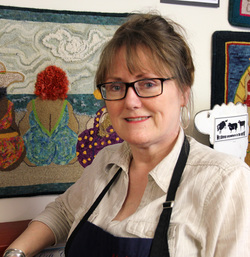
I have binders full of quick sketches and thoughts pertaining to something I’ve seen. Sometimes I’ve taken a picture or found a neat item on the internet or in a magazine that I’ve stashed away for a time when I can give it serious thought. There is so much inspiration in the world one only needs to open your eyes and look around. I don't know who said this but it stuck in my crop. It might have been part of a lecture at a life drawing class in NASCAD. "There are no new ideas, just modifications of what is already there."
Time is the biggest problem. There just aren’t enough hours in the day to bring all the ideas to the pattern stage, but at least the option will be there waiting for you to either expand on it or cut and drop it on the design room floor. I’m working on it though, one idea at a time and I’m still young enough to fill another couple of filing cabinets. That's how I'll judge my success, on how many drawers I can fill!
So back to my story. Inspired by the fish brooch, I thought I’d take it further. Maybe use six fish with all with different designs, like triangles, stripes, swirls and geometric shapes to separate and showcase their individual bodies. And then of course there had to be some wave action to pull in the ocean. Fish out of water would be a whole other meaning for something fishy.....as in smell.
This particular design is perfectly conducive to being made into a pillow. Because of the smaller size and shape it really doesn’t suit as a rug for the floor so Christine Walker Bird made the right choice when she sewed on a backing and made it into a cushion. This rug is a striking statement for any sofa or chair. I really like the colours she used, the nautical theme is always a winner with me. Blue has to be in everything I do, red second and gold last as an accent. You can’t go wrong with the primary colours and considering every visual feast in the world is made up of them, you'll never be out of fashion.
Tip: As you can see, the rug hooker outlined most of the fish in a darker wool to help separate them. It makes it easier for planning the colours because without that thin line you would have to use much higher contrasting wools to separate each fish to allow their individual personalities to shine. Outlining will make the rug feel crisp, as low contrasting colours can muddy separation of one motif from another. You shouldn't have to examine a rug closely to determine the design or try to figure out where one object ends and another one begins.
Outlining also makes for easier selection of less contrasting colours and it also defines the space perfectly to hook up against. Once that shape is defined properly you can do pretty much any kind of hooking inside and it will keep the shape, although continuing to follow the motif lines is always best to create a feeling of realism. I tell my students to always follow the lines of nature. If you want a plump bird breast, follow the contours, don't hook in straight lines up and down or horizontally.
You don't have to go looking for outlines as the eye accepts them readily. Maybe that stems back to colouring book days, we are used to seeing the lines and then we fill in colour around them. As long they aren't too wide because then they start stealing the show when the main focus should always be on the motif as a whole. Grids or outlines that are too wide can sometimes attract all the attention. In a well balanced hooked rug, nothing should jump out when you view it. So if you are hooking in a #8, a good grid thickness would be a #5 and no larger than #6. Let your pattern dictate what size grid the rug will handle. Sometimes there is so little room on a smaller motif that too wide of a grid will leave little room to add the colour, which is the most import aspect of any pattern.







 RSS Feed
RSS Feed






